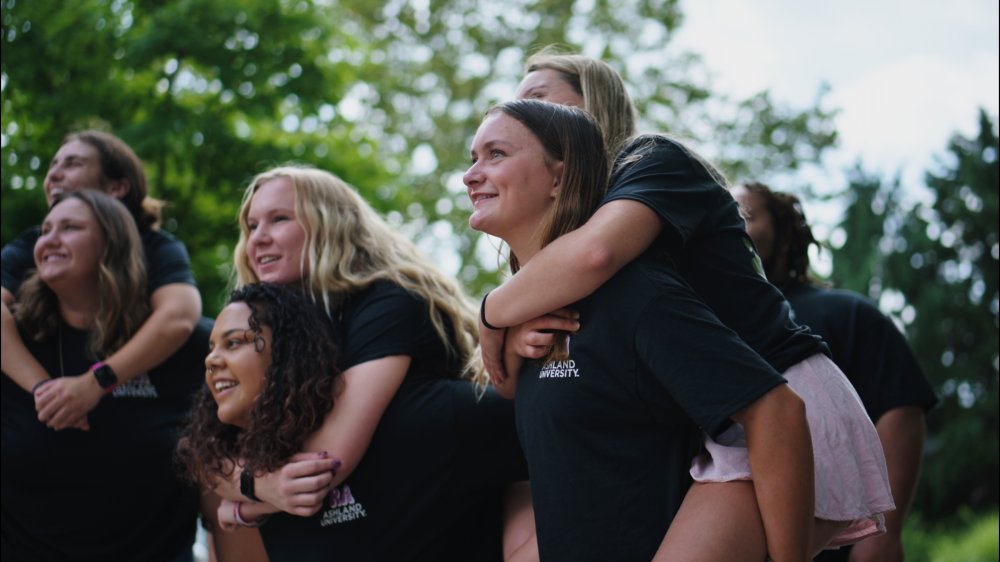Leaderboard
Popular Content
Showing content with the highest reputation on 08/26/2023 in all areas
-

New Fuji X-S20 (with DCI & UHD 60p plus 6.2K/30P 4:2:2 10-bit internal)
kye and 2 others reacted to Marcio Kabke Pinheiro for a topic
Well, quick test, very unscientific one, but here we go: 6.2k 30p, Long Gop 10bit 4:2:2 360mbps. Camera on Boost mode, filming a TV screen with a movie playing to give a harder time for the codec (if you test in a static shot, in theory the encoding work could be pretty minimal in a long gop). Face detect running too, getting faces on the tv screen. Temperature set on the menus to "High", back LCD in open position. Extreme Pro V30 200 Mbps card. Room temperature, 24 deg celsius, 70% humidity. First overheating warning (yellow) appeared around the 25 minutes mark. The red warning appeared very soon after, around 29 minutes. But the camera never shutdown, ran for 45 minutes until the 128gb card was full. Camera hot to touch, much than usual, but not close to cause a burn. With an infrared thermometer (not a very precise one) marked around 38 degrees on the back, where the fan could attach. The bottom plate was hotter, arounf 42 degrees, but you can hold the camera on the bottom without disconfort. The grip was hot too, around 40 degrees - removed the battery and card right after, battery hot but no so much, card was hotter. Was expecting worse, since the red warning appeared so soon. Since the battery was a source of heat, probably feeding energy with a PD charger could extend the run times (and probably mandatory if you want continuous takes bigger than this, albeit the battery just dropped one bar). Will do the same test in a hotter day under the sun (probably some months from now, it's winter here). Guess that yeah , a shutdown is a possibility under hot sun.3 points -
I’m hoping to wake up one morning to find that my YouTube feed is stuffed full of embargo lifted first reviews of the new S2H/S2R pairing. Every fcuking morning Lumix…. To be fair, the S5ii’s are doing just fine in their roles but I need news re. what I am going to do about replacing my previous S1R’s and current S1H for stills. AF is the Achilles to my heel… The non-PDAF units are just a little ‘early days of Fuji X’ hit & miss. Flipping back to using the S5ii’s as hybrid units for the remaining 7 jobs of the season as the S1H is missing maybe 5-10% and that is 5-10% too much. Or as previously, Leica or Sigma can throw me a bone also, but it needs to be PDAF going forward as sideways or backwards is not my thing. Any time now would be good…2 points
-
A6700 - FX30 sensor 👀
SRV1981 and one other reacted to newfoundmass for a topic
8 to 10 bit definitely is a more notable upgrade. For a lot of people 8 bit was/is enough, especially for personal use.2 points -

A6700 - FX30 sensor 👀
SRV1981 and one other reacted to Marcio Kabke Pinheiro for a topic
I'm using 10-bit 4:2:0 in my X-S20 because 10-bit 4:2:2 have no hardware decoders on Nvidia cards, only 10-bit 4:2:0. From what I've searched, keying, like you said, is the most visible difference, and contrast on the edges (hence the better keying in 4:2:2). Looks like some very pushy grades are better with 4:2:2, too. For me (personal use), I think that 4:2:0 will be enough - never had a 10-bit camera before, I guess that 8 to 10 bit is a much more noted upgrade.2 points -
The Leica Q3 should be pretty good indication what SL3 and S2H will be, high resolution 8K monster with pdaf.1 point
-
Americana: 12bit RAW, and I needed all the latitude I could get given the very mixed lighting levels (luma adjustments in post) and the different colors of the lighting (WB adjustments in post).1 point
-
1 point
-
The A7SIII/FX3 should really be considered for two things: low-light and rolling shutter. It pretty much sits on top of the pyramid for those two categories. For hybrids I'm more into high resolution sensors so R5/R5C/A7RV/Z8 would be my picks but stacked sensors are even more clutch so Z8/R3/XH2S are also ace choices. I think the next gen of Sony's and Panny's equipped with stacked sensors will be lit. But yeah all current cameras are still pretty great!1 point
-
A6700 - FX30 sensor 👀
SRV1981 reacted to newfoundmass for a topic
I think we'll start seeing more of this happening with Sony, especially as they start releasing features that require more communication between the lens and the body like needed for breathing compensation, etc. It also wouldn't surprise me to see them start to try clamping down on third party lenses now that their lens selection has matured. When they were just trying to get people into the system those third party lenses helped a lot, but now that they've fleshed out their own offerings I imagine they're wanting people to purchase those instead. They aren't making any money when someone buys a Viltrox lens, but they do when someone buys a Sony or Tamron lens.1 point -
Purely Sony, if video/filmmaking was my sole thing, I’d personally go FX3 for the form factor. Hybrid, then the A7Siii. But if hybrid, I’d skip the A7Siii and go Lumix S5iix.1 point
-
Well if you're also on Canon, do check out the R5C. It's imo bit more cine cam oriented with the actual full C-line menu that includes things like shutter angle, gain ISO, WFM, false color etc. It can also do 8K60p FF, 6K S35, 2K S16. And internal RAW. All things the Sony can't do. And it has an EVF! The higher resolution may come in useful if you do macro/crop work. And the various crop modes open up a lot of lens options. It's not perfect, its downsides are poor battery life and no IBIS but there are workarounds. In the end I think your lens preference should dictate what system you choose but that's the alternative I'd consider (I'm also on both Sony & Canon systems).1 point
-
Yes, 10-bit vs 8-bit is a much larger consideration, especially if you're shooting in log. It's rare to see issues with either 8-bit or 4:2:0 in real-world examples, but the ones I have seen appeared to have a similar impact where skin tones had larger squares of yellow/orange/pink instead of the same colours being much more granular and natural-looking. The other consideration is resolution. We haven't all changed to displays that are 4x the size since before 4K was released and 1080p was the standard, therefore the individual pixels are smaller today in the viewers field-of-view than they used to be. IIRC 4:2:0 in 4K is the same as 4:4:4 in 1080p.1 point
-

New Fuji X-S20 (with DCI & UHD 60p plus 6.2K/30P 4:2:2 10-bit internal)
SRV1981 reacted to Marcio Kabke Pinheiro for a topic
Will do a test with mine here - not the best conditions now (the temperature here dropped to around 23oC), and only have a V30 card (a 200Mbps Sandisk Extreme Pro that until now worked without glitches with 6.2k, but probably will generate more heat). But will try to record in Long GOP instead of ALL-I (this probably generates even more heat), with the LCD open (since the back was made to get the fan, probably there is some heat spreader there).1 point -
Crash course in shooting video on the original A7s?
newfoundmass reacted to bjohn for a topic
I settled on using the A7iii for video and will leave my Blackmagic cams at home. I did a lot of tests with the Sony, including one at a concert Tuesday night, all of which came out better than I expected. Now my only quandary is lenses. Ideally I'd shoot all the video on one lens for consistency/continuity, but I only have one zoom, the Tokina ATX Pro 28-70 f2.6-2.8 (the Angénieux design) and while I love it in daylight I've been less than thrilled with the images I get from it at concerts. I have that lens in Nikon mount, and the other Nikon mount lens I have is the Zeiss ZF.2 Distagon 35mm/1.4, which is an amazing lens but won't match well with the Tokina. On the rangefinder prime side I have three Sonnar lenses (50mm, 73mm, and 105mm) but nothing wider than 35mm. The first dance is tonight, but the headline acts are tomorrow night so I'll be able to try out a few different lens strategies tonight to see what works best in this location and under this lighting.1 point




